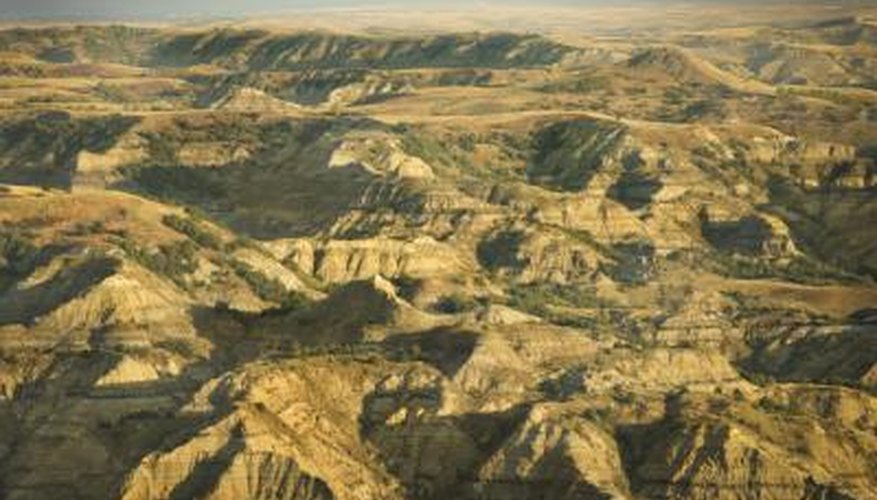Landforms are all around your environment. Landforms are any type of naturally formed earth. They include everything from mountains to oceans. Geologists study all types of landforms, especially their effects on humans. Landforms affect humans by their shifting, their structure, their effects on the climate and how humans grow food.
Shifting
One of the most prominent effects of landforms on humans is their shifting. Most of the Earth has been created by shifting landforms through the movement of fault lines and tectonic plates. Earthquakes are felt and cause damage to man-made structures. Earthquakes occur when landforms shift where tectonic plates meet. Also, volcanoes erupt as a consequence of these shifts. The difference between an earthquake and an erupting volcano is that the temperature and pressure in the Earth's crust forces magma to spew from the volcano. These shifts help change the way the landscape looks, which affects the humans living nearby.
- One of the most prominent effects of landforms on humans is their shifting.
- Most of the Earth has been created by shifting landforms through the movement of fault lines and tectonic plates.
Structure
The basic structure of a landform affects humans. The geology of a hillside or mountain affects humans who want to drive over it or even live on it. Scientists need to understand the structure of landforms so humans can safely use and live near them. Certain rocks, such as granite, are more stable to build on than other rocks, such as shale. Other factors about the structure of landforms are their drainage. Scientists must understand the way streams and other waterways move through a landform to be sure it is stable enough for all types of human activity.
- The basic structure of a landform affects humans.
- Scientists need to understand the structure of landforms so humans can safely use and live near them.
Climate
Landforms affect weather patterns. High up in mountains, the climate may be cooler, while lower in valleys the climate may be warmer. Mountain landforms may block rain clouds from entering valleys and snow may form at the top of a mountain rather than at the bottom of the mountain. Tornadoes provide another example of a landform's effect on humans. Tornadoes form in flat areas, such as the Great Plains. This flat area, also know as Tornado Alley, becomes a breeding ground for tornadoes when the tropical air from the Gulf of Mexico clashes with the icy air from Canada.
- Landforms affect weather patterns.
- Mountain landforms may block rain clouds from entering valleys and snow may form at the top of a mountain rather than at the bottom of the mountain.
Food
Food production is necessary for the survival of humans, and landforms affect all types of food production. Scientists and farmers need to understand the soil and drainage of the land to successfully grow crops. Also since landforms affect climate they also affect agriculture. Agriculture is dependent on sunshine, water and soil. All of these aspects are effected by different types of landforms, such as mountain ranges, hills and water systems. According to a NASA-funded study, climate change is seriously affecting all types of food production.
- Food production is necessary for the survival of humans, and landforms affect all types of food production.
